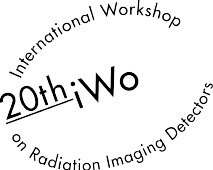Speaker
Description
Detectors of Medipix/Timepix family are usable in a wide range of applications. The original purpose of an x-ray imagining was broadened to many areas, where mainly Timepix detectors became very often used as a powerful tool in a particle and an experimental physics. The latest member of this class – the Timepix3 ASIC (read-out chip) – allows measuring the Time-over-Threshold (ToT) and the Time-of-Arrival (ToA) values of hits at the same time. It also yields a time resolution of 1.56ns, a high hit-rate and event data-driven readout mode.
Nowadays, on the market and in the scientific community there are several available readout devices and instruments (Katherine readout from UWB, CTU; AdvaDAQ from Advacam or SPIDR from Nikhef) that make it possible to utilize the detectors easily. However for specific applications, as measuring at ATLAS cavern (experiment area) at CERN is, there was a need to design an enhanced readout system meeting requirements of a time synchronization (detectors among each other and with a trigger), a long distance among sensors and readouts, a radiation hardness, a cooling, a power supply etc.
Attached figure
Figure 1. Radiation during collisions (10s)
In this contribution, authors describe the design of the detector network based on the Timepix3 and the Katherine readout (with Gigabit Ethernet interface). The main emphasis is put on the technical solution and the concept of the project. The designed system, which was already installed in January 2018 at ATLAS experiment at CERN, consists of four Timepix3 detectors (in a configuration of a two-layer telescopes) and readout system. For reason of expected harsh radiation field, only the detector units (sensors with power supplies) of the system are placed in the cavern, all readout electronics is far outside of the radiation field – localized in a rack room. Actually, the distance between detector and readout device is 80m (up to 120m was tested) in the installed system. Time-stamping of all detectors in the network work synchronously to each other; it means user can observe events in various parts of the cavern (generally place with rad. field) with uniform time stamps. Additionally, this time-stamping is also in exact relation to the orbit clock generated by LHC accelerator.
Authors also present first results of the design system, they are focused mainly on the time-stamping performance and the stability of distributed detector network.
